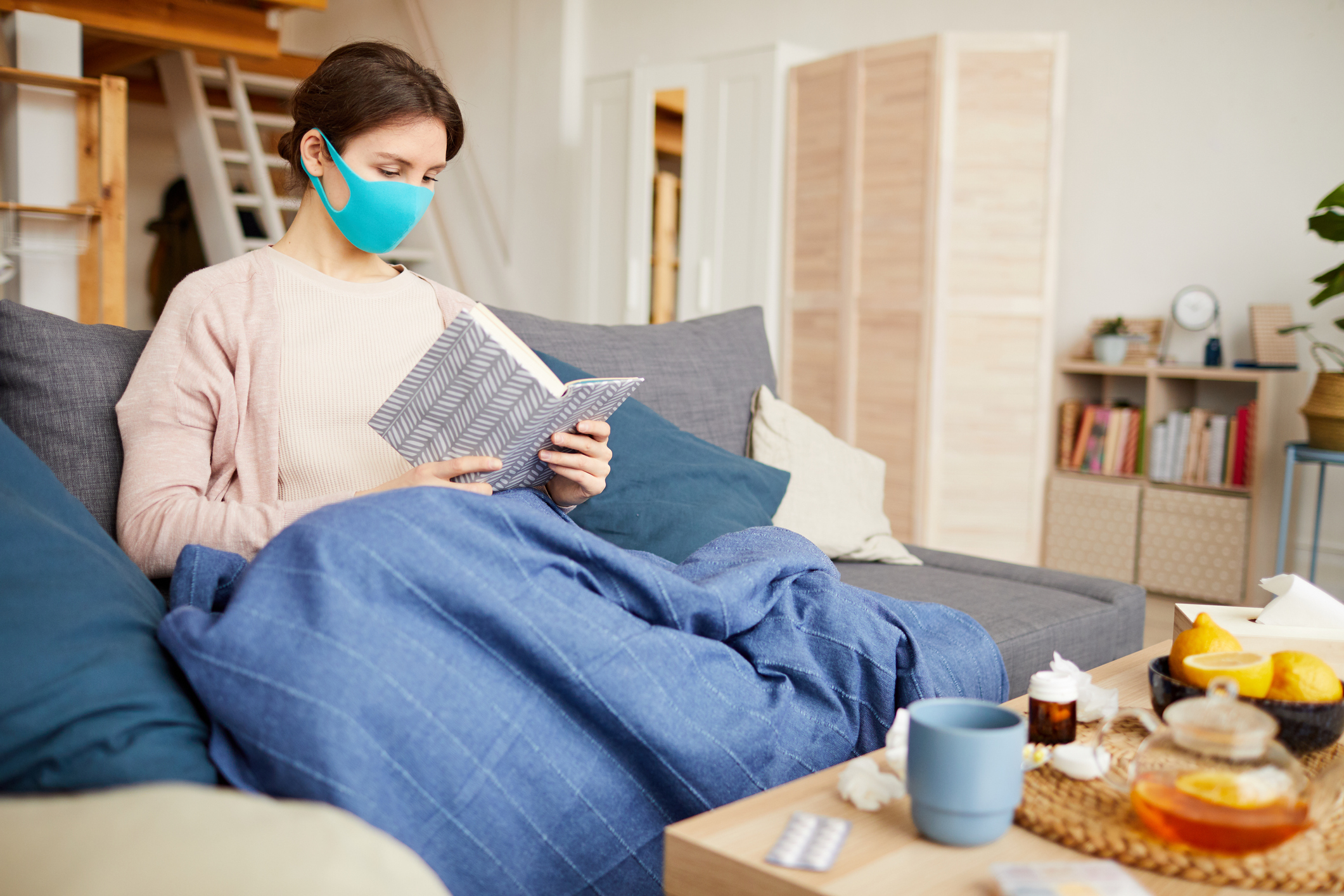Get Easy Health Digest™ in your inbox and don’t miss a thing when you subscribe today. Plus, get the free bonus report, Mother Nature’s Tips, Tricks and Remedies for Cholesterol, Blood Pressure & Blood Sugar as my way of saying welcome to the community!
Two times when COVID-19 is most likely to spread

As we make our way through the second year of the COVID-19 pandemic, we’re pretty clear on how the SARS-CoV-2 virus infects people…
Experts have determined it’s transmitted mainly through airborne respiratory droplets generated when a person coughs, sneezes, speaks or sings. And because the virus can live in the air for up to 3 hours, it spreads most easily in crowded indoor spaces with poor ventilation.
However, as the swift spread of the Delta variant has shown, there’s still a lot left to learn about precisely when and to what extent people infected with the COVID-19 virus are most likely to transmit the virus to others.
To that end, researchers are working to identify the precise times during which COVID-19 carriers are most contagious…
The most dangerous times for COVID-19 spread
According to a recent study, people infected with the COVID-19 virus are most at risk of transmitting it to others between two days before and three days after they develop symptoms, with risk reaching its peak on the day symptoms first present themselves.
“In previous studies, viral load has been used as an indirect measure of transmission,” says Leonardo Martinez, assistant professor of epidemiology at Boston University’s School of Public Health and study co-lead. “We wanted to see if results from these past studies, which show that COVID cases are most transmissible a few days before and after symptom onset, could be confirmed by looking at secondary cases among close contacts.”
The researchers did contact tracing and studied COVID-19 transmission among 8,852 close contacts of 730 primary cases in China from January 2020 to August 2020. A primary case is the first infected person in an outbreak. “Close contacts” included individuals who lived in the same household or ate together, co-workers, people in hospital settings and riders in shared vehicles.
Those who were infected were monitored for at least 90 days after their initial positive COVID-19 test results to separate asymptomatic and pre-symptomatic cases.
Of those identified as primary cases, 89 percent developed mild or moderate COVID-19 symptoms, and 11 percent were asymptomatic. None developed severe symptoms. Household members of primary cases had higher infection rates than other close contacts, as did others who were exposed to primary cases multiple times or for longer durations.
These risk factors had no impact on the finding that close contacts were more likely to catch COVID-19 from the primary infected person if they were exposed shortly before or after that person developed detectable symptoms.
“Our results suggest that the timing of exposure relative to primary-case symptoms is important for transmission, and this understanding provides further evidence that rapid testing and quarantine after someone is feeling sick is a critical step to control the epidemic,” Martinez says.
The study also found people with COVID-19 were more likely to have an asymptomatic case if they caught the virus from a primary case who was also asymptomatic. When compared with individuals who had mild or moderate symptoms, primary individuals without symptoms were much less likely to transmit COVID-19 to their close contacts. And if they did, the contacts were less likely to experience noticeable symptoms.
Martinez notes the study also further emphasizes the need for COVID-19 vaccination, which reduces illness severity among those who do get infected with COVID-19 and develop symptoms.
Steps to stop the COVID-19 spread
At this point, millions of Americans have been fully vaccinated against COVID-19, so there’s plenty of evidence that getting a COVID-19 vaccine is an effective way to protect yourself against the virus. Experts advise that the three vaccines available in the U.S. give considerable protection against COVID-19, and dramatically lower the risk of severe illness if you do get the virus, thus keeping you out of the hospital.
Still, vaccination isn’t 100 percent foolproof, particularly against the more contagious SARS-CoV-2 variants like Delta.
So, regardless of your vaccination status, if you become aware that you’ve been exposed or find yourself developing symptoms of COVID-19, you need to get tested immediately, then isolate yourself from others in your household until you get your results. The sooner you isolate, the better to avoid contact with others during the two times of peak exposure the researchers referenced: between two days before and three days after symptoms develop.
Remember, the earliest signs of COVID-19 infection can differ by age. So, know what your symptoms may look like. And be aware of things that can make you less likely to become infected.
Experts still advise avoiding crowded indoor spaces and wearing a mask when you absolutely must be inside around people outside your household. And of course, keep washing your hands, since that can reduce transmission for all kinds of nasty germs.
As we’ve noted in previous issues, taking steps to strengthen your immune system can also help defend against illness. Make sure you’re getting nutrients like probiotics, antioxidants, magnesium and vitamin D to help support your immune system.
Editor’s note: There are perfectly safe and natural ways to decrease your risk of blood clots including the 25-cent vitamin, the nutrient that acts as a natural blood thinner and the powerful herb that helps clear plaque. To discover these and other secrets of long-lived hearts, click here for Hushed Up Natural Heart Cures and Common Misconceptions of Popular Heart Treatments!
Sources:
COVID-19 Is Most Transmissible 2 Days Before, 3 Days After Symptoms Appear — Boston University School of Public Health
COVID-19 Transmission Dynamics Among Close Contacts of Index Patients With COVID-19 — JAMA Internal Medicine
How Does Coronavirus Spread? — WebMD













